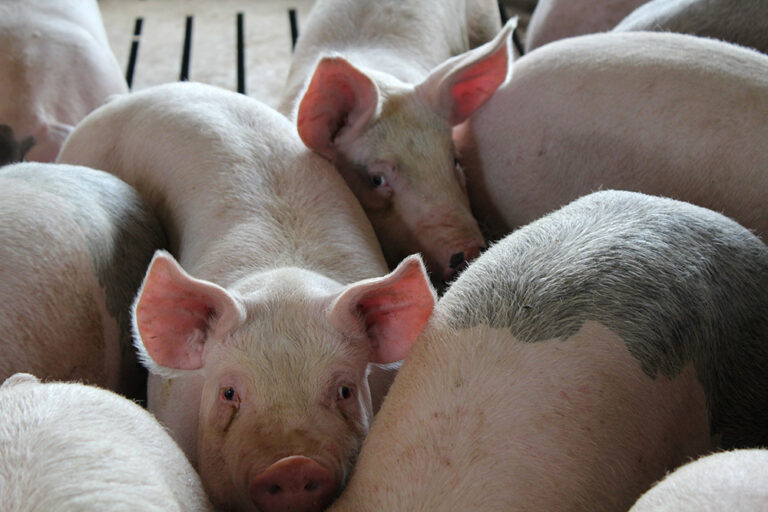An African Swine Fever outbreak in the U.S. could kill millions of pigs in the country, mean financial ruin for some growers and put a quick end to the country’s lucrative pork exports.
So federal and state officials, made all the more wary by the disease showing up in the Caribbean, have begun plotting how they might contain the virus if it showed up on the American mainland.
For good reason. It’s a formidable foe that no vaccine can fend off and is fatal to both hogs and, potentially, to the businesses that rely on them.
The U.S. Department of Agriculture, the Iowa Department of Agriculture and Land Stewardship, Tyson Foods and other partners held a mock exercise last month to work on their response to a potential outbreak.
KatieRose McCullough, the director of regulatory and scientific affairs with the North American Meat Institute, said during a Friday media briefing that the meatpacking industry needs to prepare for a possible outbreak.
“With as much loads coming in, there’s potential spread that can come out of the packing plant with a widespread outbreak, to other farms, which could exacerbate any potential outbreak that there is,” she said.
McCullough said the mock exercise showed the group some areas it needs to work on, like identifying meatpacking workers who live on hog farms and could end up as accidental carriers either to the plants or to their own pigs.
“Are they,” she said, “being provided different PPE to be wearing in our facility or alternative clothing?”
People who work with hogs also need to encourage trucks to get washed as soon as they leave meatpacking facilities to prevent potential spread, McCullough said.
During the exercise, participants used a tool called AgView to exchange information about animals moving through a packing plant. Barb Masters, the vice president for regulatory policy, food and agriculture at Tyson Foods, said if a state were to ask for that information today, Tyson would provide it with paper records. But the AgView technology would help Tyson provide more accessible electronic records to the state.
“The easier we can make that to give that information to (Iowa’s state veterinarian), and so he can have it in a form that he can put it into his regulatory system, the easier we can make it, the quicker he can do his investigation,” Masters said.
The USDA’s Animal and Plant Health Inspection Service has been monitoring the disease around the world for the last few years. Rosemary Sifford, the deputy administrator of USDA APHIS, said it’s spread from Sub-Saharan Africa to Asia to Europe, and it’s been moving through Europe at a “fairly rapid pace.”
“For a few years now, we’ve really had a focus on what the virus is doing and where it’s moving and the risks to the United States,” she said.
In July, African Swine Fever was confirmed in the Caribbean — the Dominican Republic and Haiti. Sifford said the U.S. has been working with those countries to stamp out the disease.
“(The) Dominican Republic and Haiti right now are our biggest concern in terms of proximity of the virus to the United States and the risk level,” Sifford said. “But we do also still recognize the risk level for products and people moving from other countries that have the virus in Asia and Europe.”
9(MDM5MjE5NTg1MDE1Mjk1MTM5NjlkMzI1ZQ000))

